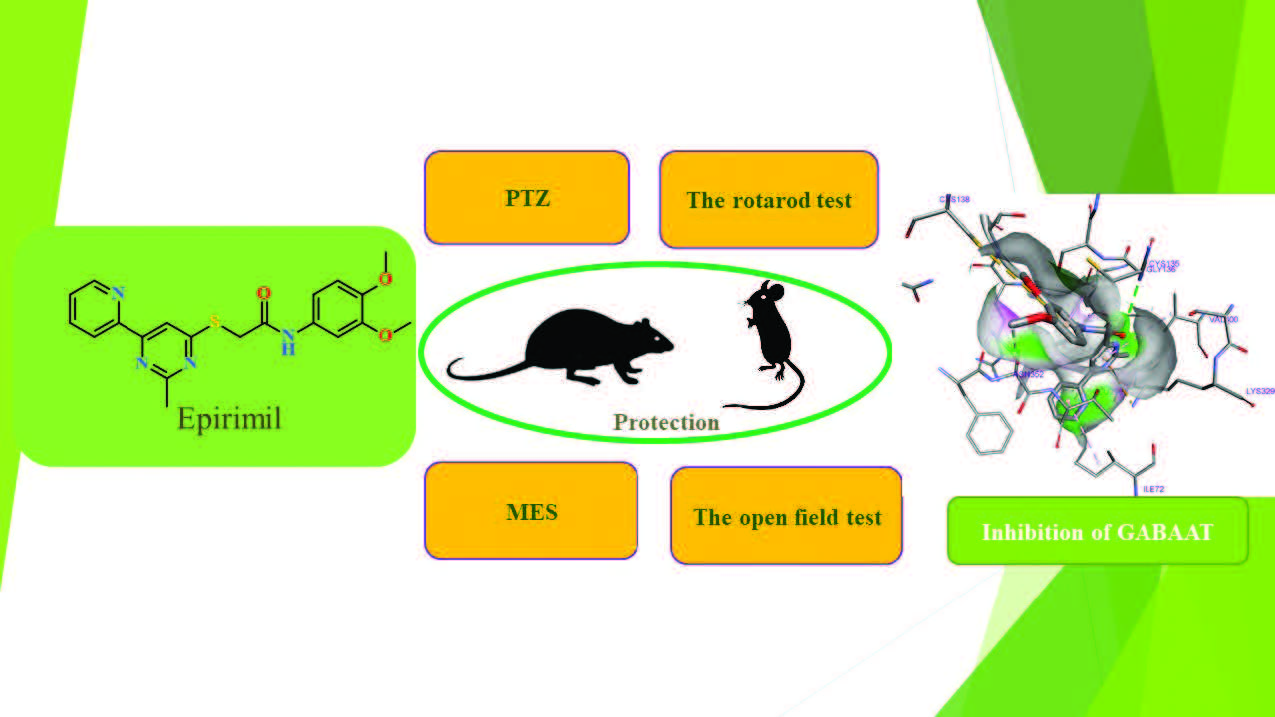Molecular docking, ADMET study and in vivo pharmacological research of N-(3,4-dimetoxyphenyl)-2-{[2-methyl-6-(pyridine-2-yl)-pyrimidin-4-yl]thio}acetamide as a promising anticonvulsant
DOI:
https://doi.org/10.3897/rrpharmacology.6.53332Abstract
Introduction: The search for new anticonvulsants for epilepsy treatment with higher efficacy and better tolerability remains important. The aim of the present research was an in silico and in vivo pharmacological study of N-(3,4-dimethoxyphenyl)-2-((2-methyl-6-(pyridin-2-yl)pyrimidin-4-yl)thio)acetamide (Epirimil) as a promising anticonvulsant.
Materials and methods: A 1H and 13C NMR spectroscopy, LS/MS, and an elemental analysis were used to determine Epirimil structure. An ADMET analysis, as well as a docking study using anticonvulsant biotargets, e.g.: GABAAR, GABAAT, CA II, NMDAR, and AMPAR, was carried out. Anticonvulsant activity was proved, using PTZ- and MES-induced seizures in rats and mice, and neurotoxicity was determined using a rotarod test. Influence of Epirimil on the psycho-emotional state of the laboratory animals was determined by an open field test.
Results and discussion: A synthesis method of a promising anticonvulsant Epirimil was modified. The calculated ADMET parameters and a molecular docking into the active sites of anticonvulsant biotargets allowed evaluating the research prospects and predicting possible mechanisms for implementing anticonvulsant activity. A prominent anticonvulsant activity of Epirimil was established using in vivo studies on the model of PTZ-induced seizures in rats and MES-induced seizures in mice. In terms of toxicity, Epirimil belongs to class IV – low toxic substances. The open field test showed that Epirimil had almost no effect on the animals’ behavioral responses: it neither changed their psycho-emotional activity, nor increased their anxiety level. ED50, TD50 and protective index of Epirimil according to its anticonvulsant activity were calculated.
Conclusion: The obtained experimental results substantiate the prospects of N-(3,4-Dimethoxyphenyl)-2-((2-methyl-6-(pyridin-2-yl)pyrimidin-4-yl)thio)acetamide as a promising active pharmaceutical ingredient having a multifactor mechanism of anticonvulsant activity.
Graphical abstract:
 Русский
Русский
 English
English

